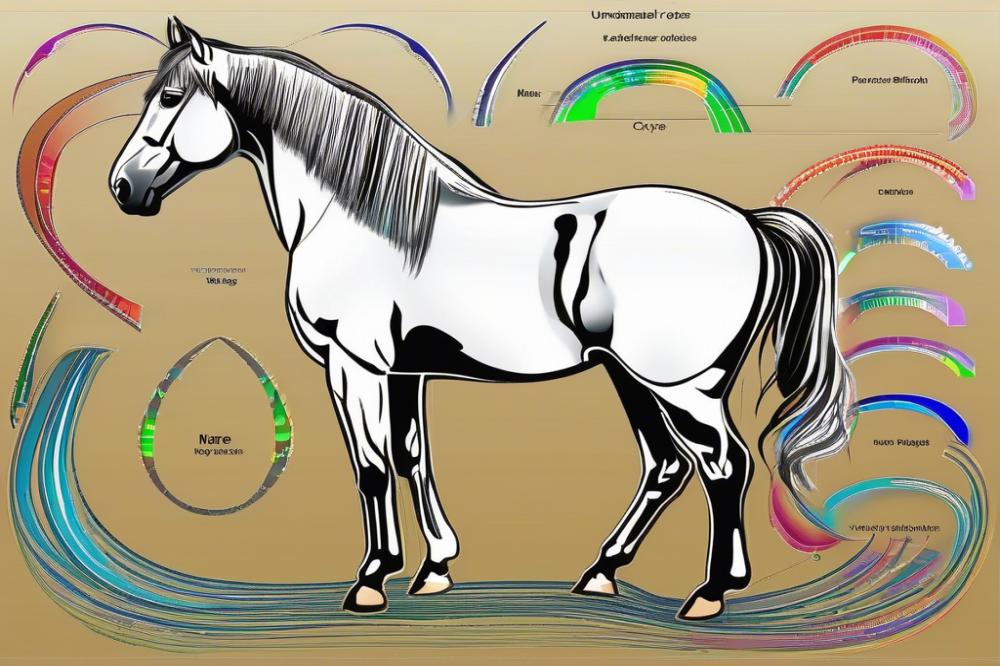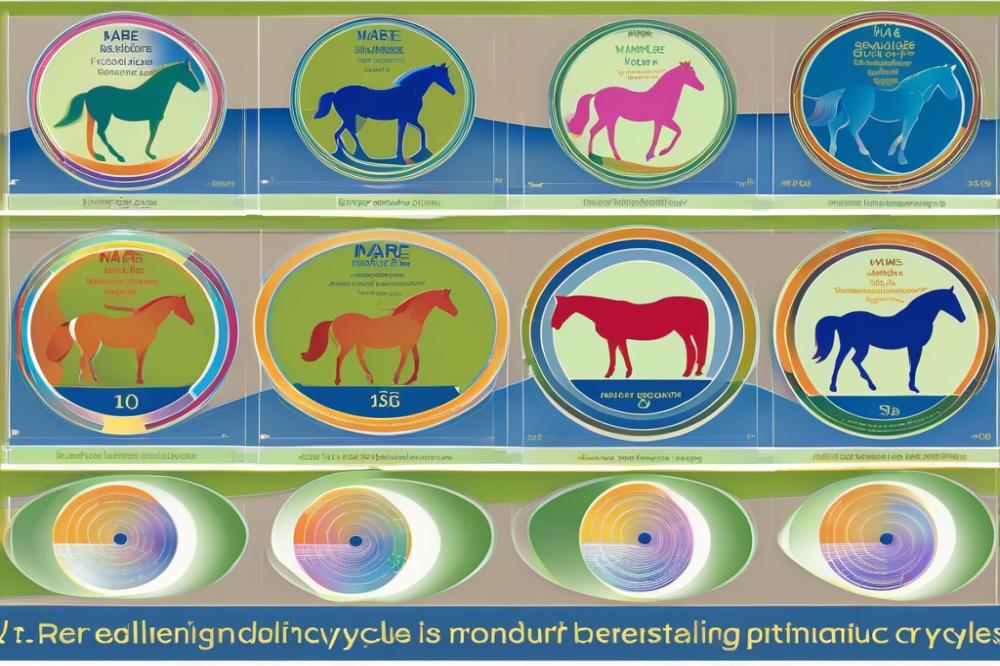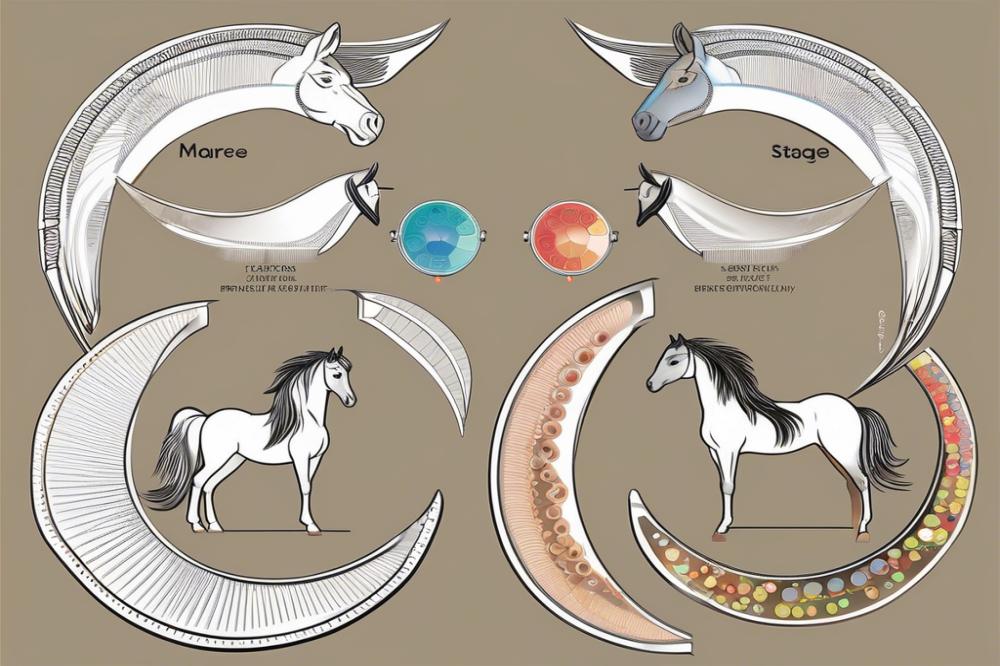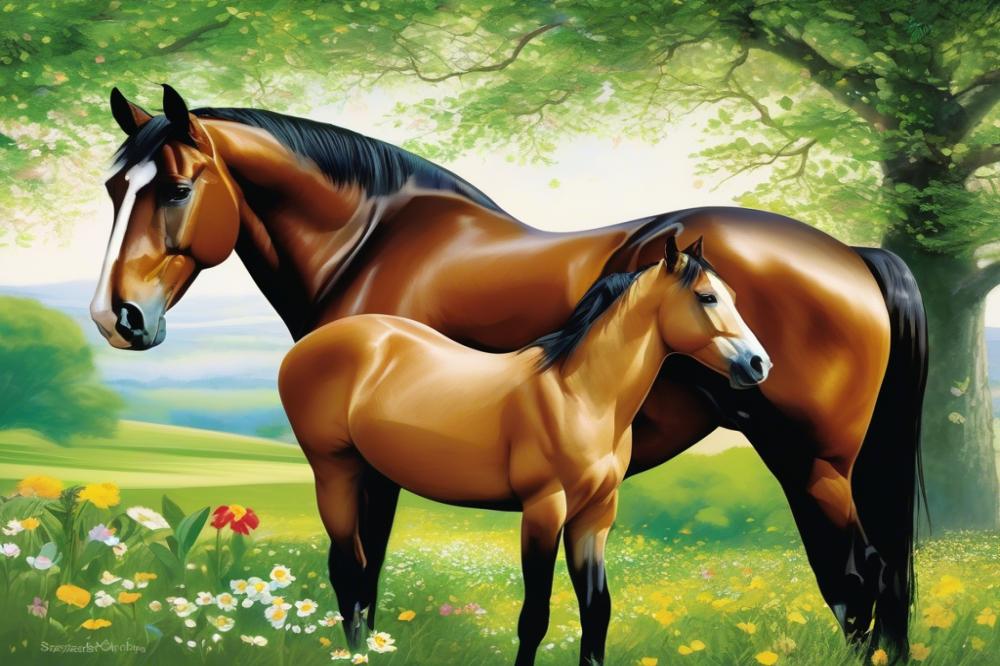Understanding mare cycles for Optimal Breeding
Horses are remarkable animals, and understanding their reproductive biology is vital for successful breeding. mare cycles involve a series of physiological changes that female horses undergo throughout the year. These changes play a significant role in breeding management. By learning how to recognize the signs of estrus and ovulation, horse owners and breeders can greatly improve their chances of successful mating.
estrus refers to the period when a mare is receptive to a stallion, and it typically lasts for about five to seven days. ovulation marks the time when an egg is released, making it the optimal moment for breeding. Recognizing these cycles can give breeders a competitive edge. With the right knowledge, they can time their breeding efforts more effectively, leading to healthier foals and more successful breeding seasons.
This guide will explore the key aspects of mare cycles in greater detail. First, we will look at the phases of the estrous cycle, providing clarity on what to expect during each stage. Next, we will discuss methods for monitoring a mare’s reproductive status. Finally, we will share practical tips for effective breeding management that can enhance the overall efficiency of your breeding program. By the end of this guide, readers will have a better understanding of how to navigate the complexities of mare cycles for optimal breeding success.
Mare Cycles

Mare cycles define the periodic reproductive patterns that mares undergo. Understanding these cycles is vital for successful breeding. By knowing the phases of reproduction, breeders can time breeding attempts appropriately. This knowledge can make a big difference in achieving pregnancy.
Overview of Reproductive Cycles in Mares
Mares typically experience a reproductive cycle that lasts about 21 days. However, cycles can range from 18 to 24 days. During this period, hormonal changes prepare the mare for mating and pregnancy. Monitoring is essential for anyone involved in breeding. A keen eye can catch the best moments for breeding.
Different Stages of the Mare Cycle: Estrus and Ovulation
The reproductive cycle can be divided into several stages, with estrus being one of the most critical. Estrus, often called heat, indicates when a mare is most receptive to a stallion. This phase usually lasts between 5 to 7 days. Ovulation happens toward the end of this stage, marking the release of an egg. Successful mating often occurs just before or during this time.
Length and Timing of Reproductive Cycles
Each cycle consists of various stages, each playing a role in reproduction. The dominant follicle develops during the follicular phase, leading to estrus. After ovulation, the cycle enters the luteal phase, which lasts about 14 days. During this time, hormonal levels fluctuate, preparing the mare for potential pregnancy. A breeder’s understanding of timing can significantly affect outcomes. Correctly predicting these cycles allows for better planning.
Seasonality and Mare Fertility

How seasonality affects mare cycles
Seasonality plays a significant role in mare reproductive health. Mares naturally have a cycle influenced by daylight, temperature, and other environmental signals. As daylight hours increase in spring, hormone levels begin to rise. This change triggers the mare into a state of estrous, which is crucial for breeding. During shorter days in winter, reproductive hormones drop. This condition results in an anestrus phase where mares are less likely to conceive.
Optimal breeding seasons for mares
The best time to breed mares usually falls from early spring to early summer. Many breeders aim for this window because the mares are in peak reproductive condition. Certain regions may have variations based on climate and local conditions. In temperate areas, mares exhibit cycles that align with the longer days of summer. This timing maximizes the chances of pregnancy and the overall health of the foal.
Influence of environmental factors on reproductive cycles
Environmental conditions can have a profound impact on fertility. Factors such as temperature, humidity, and even social interactions among mares can play a role. Scenarios like increased stress from extreme weather may disrupt normal hormonal rhythms. Proper management of living conditions becomes vital for optimizing breeding outcomes. Access to adequate nutrition is also essential, enabling mares to achieve good body condition. Healthy mares tend to cycle more regularly, which is beneficial for breeding.
Strategies to improve mare fertility throughout seasonal variations
Employing specific strategies can enhance fertility throughout different seasons. Light therapy is one effective method. This technique involves exposing mares to artificial light during the winter months to mimic longer days. Correct nutrition also plays an important role in maintaining reproductive health. Supplementing with vitamins and minerals can support fertility and overall wellness. Regular veterinary check-ups provide essential insights into each mare’s health status. Timely vaccinations and deworming help keep reproductive systems functioning optimally. Additionally, monitoring temperature and stress levels in the environment can contribute positively to a mare’s reproductive success.
Hormonal Changes During the Mare Cycle

Overview of Hormonal Changes During Estrus and Ovulation
The mare’s reproductive cycle features distinct phases, with estrus and ovulation playing key roles. Estrus is the period when the mare is receptive to mating. It usually lasts around 7 to 9 days. During this time, estrogen levels increase significantly. This hormone helps prepare the body for possible conception. Around the end of estrus, ovulation occurs. This is when the mare releases a mature egg. The timing of ovulation is crucial for successful breeding.
Role of Hormones in Regulating Mare Cycles
Hormonal interactions are vital for regulating the reproductive cycle. Estrogen, progesterone, and luteinizing hormone (LH) work together closely. Estrogen stimulates the growth of follicles in the ovaries. After ovulation, progesterone takes over. It helps maintain pregnancy if fertilization occurs. LH is essential for triggering ovulation. An understanding of these hormones allows for better timing in breeding practices.
Effects of Hormonal Imbalances on Breeding Success
An imbalance in hormones can lead to problems in the reproductive cycle. Low estrogen levels may cause irregular estrus cycles. Conversely, excessively high progesterone can prevent ovulation from occurring. Such imbalances often lead to difficulties in breeding. These issues can reduce the chances of successful conception. Monitoring hormone levels can help identify problems early.
Management of Hormonal Changes to Optimize Breeding Outcomes
Effective management of hormonal changes is crucial for achieving optimal breeding results. Regular veterinary check-ups can track the reproductive cycle accurately. A veterinarian may recommend hormone therapy if imbalances are detected. Proper nutrition also plays an important role. A balanced diet supports the mare’s overall health and hormonal function. Timing breeding with ovulation can significantly enhance success rates. This strategic approach is beneficial for both the mare and the breeder.
Breeding Techniques
breeding horses requires an understanding of various techniques and timing. Two common methods are natural service and artificial insemination. Natural service involves the mare breeding directly with the stallion, while artificial insemination allows for sperm to be introduced without physical contact. Each method has its advantages and challenges, making the choice important for successful breeding.
Timing of Breeding
Timing plays a crucial role in the breeding process. Mating should occur when the mare is in heat, which happens during specific phases of her cycle. Each cycle lasts around 21 days, with estrus typically lasting about 5 to 7 days. Adequate observation is necessary to catch this period. Breeders often use tests and behaviors to know when the best time is. Any miscalculation could delay breeding efforts and result in missed opportunities for successful conception.
Monitoring Estrus and Ovulation
Close monitoring of estrus and ovulation is vital for effective breeding. Signs of estrus include frequent urination, lifting of the tail, and increased agitation. Many breeders use ultrasound technology to observe follicle development and determine ovulation timing. This approach gives a better chance of successful breeding, as sperm can meet the egg at the right moment. Regular examinations help avoid guessing and minimize the risk of failure.
Choosing the Right Stallion
Selecting the right stallion is essential based on the breeding goals. Consideration of genetic traits, temperament, and health is important. Some stallions pass on specific characteristics which may be desirable for the offspring. Understanding how a stallion’s qualities match with the mare’s cycle can lead to better breeding outcomes. Discussing options with a veterinarian or experienced breeder can provide additional insights in making an informed decision.
Mare Health and Its Impact on Breeding
Maintaining optimal health in mares is crucial for successful breeding. Healthy mares are more likely to cycle regularly and conceive. Issues like obesity and stress can negatively affect fertility. Regular check-ups can identify problems early on, aiding in timely treatment.
Common health concerns that impact breeding include infections and hormonal imbalances. A mare with a uterine infection may struggle to conceive or carry a foal to term. Hormonal irregularities can lead to disrupted cycles. Identifying these issues quickly is vital for successful breeding outcomes.
Nutritional Considerations During Different Stages of the Mare Cycle
Nutrition plays a significant role in a mare’s reproductive health. Providing balanced diets helps mares maintain healthy body condition. During the estrus cycle, energy requirements may increase. It is essential to offer appropriate supplements, especially during pregnancy and lactation. Nutrients such as protein, vitamins, and minerals support overall health.
Even subtle changes in diet can influence fertility. Overweight mares may have difficulty breeding, while underweight ones can experience irregular cycles. Constant monitoring of body condition can help prevent these issues.
Regular Veterinary Care and Reproductive Health Management
Establishing a routine veterinary care plan is essential for reproductive health. Regular exams can help identify any underlying issues affecting fertility. Vaccinations and deworming are also crucial for preventing disease. Your veterinarian can provide personalized guidance based on a mare’s needs.
Using reproductive health management tools can also be beneficial. Techniques like ultrasound can monitor a mare’s ovulation and health. Keeping accurate breeding records helps track cycles and any observed changes. This information can pave the way for more informed breeding decisions. Regular vet visits and proper management will boost the chances of a successful breeding season.
Gestation and Foaling
Overview of the gestation period in mares
The gestation period for mares usually lasts about eleven months. This time frame can vary slightly, with some mares foaling as early as 320 days and others going as long as 380 days. During this period, the developing foal grows rapidly. Mares may show signs of their pregnancy such as weight gain and changes in their shape. Monitoring the mare’s body condition is essential as it can influence the health of the foal. Regular check-ups with a veterinarian can help detect any potential issues early.
Changes in mare health and care during gestation
Mare health can change significantly during pregnancy. Nutritional needs increase as the foal develops. Providing a balanced diet that includes higher protein and essential vitamins becomes important. Regular exercise can also help maintain a healthy weight. Stressed mares may experience complications. Thus, creating a calm and supportive environment aids their wellbeing. Taking care of their hooves and checking for any signs of illness is also key. Regular vaccinations and parasite control should be part of the plan.
Preparation for foaling and best practices
As the due date approaches, it’s time to prepare for foaling. Selecting a quiet, clean place for the mare to give birth is essential. Ideally, this area should have soft bedding and access to fresh water. Gathering necessary supplies like clean towels, iodine solution, and a thermometer is wise. Watching for behavioral signs of foaling helps in being ready. Indicators include restlessness or a noticeable change in appetite. Having a veterinarian’s contact information handy can provide peace of mind.
Post-foaling care for both mare and foal
After the foal arrives, immediate care is vital. Ensuring the foal stands and nurses within the first few hours is a priority. Monitoring the mare after birth is equally important. Watch for any signs of distress or complications, such as excessive bleeding. Providing fresh water and quality feed helps the mare recover. Foals should be monitored for shivering or weakness. Early veterinary intervention can prevent future health problems for both mare and foal. Close observation during the first few days can help catch any issues that may arise.
Summarizing the Significance of Mare Cycles in Breeding
Understanding the cycles of mares is vital for achieving successful breeding. Knowledge about these cycles helps breeders identify the optimal times for mating. Recognizing signs of estrus can lead to better decision-making in breeding practices. Furthermore, awareness of ovulation times allows for precise timing in artificial insemination, maximizing the chances of pregnancy.
Integrating health, training, and breeding techniques is crucial. A healthy mare is more likely to have regular cycles and successful pregnancies. Regular veterinary check-ups can catch any underlying issues that might affect reproduction. Training programs tailored to a mare’s cycle can improve both her performance and overall well-being.
Breeders should feel encouraged to apply their knowledge about these cycles. Utilizing this information effectively can lead to excellent outcomes. Optimal timing combined with proper care can result in healthy foals that are well-prepared for future training and competition. The journey of breeding can be rewarding, especially when backed by informed practices and observations.
The information gained from understanding mare cycles equips breeders with the tools needed for success. By focusing on health and employing effective breeding techniques, one can navigate the complexities of reproduction more easily. Consider embracing this knowledge as a vital part of your breeding strategy, ensuring the best for both mare and foal.



